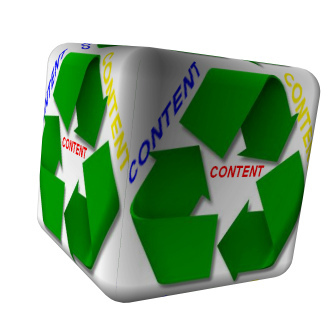 As a follow-up to my article on Five Simple Ways to Promote a Blog Post, a customer emailed me and asked me for ideas on how to market a new white paper.
As a follow-up to my article on Five Simple Ways to Promote a Blog Post, a customer emailed me and asked me for ideas on how to market a new white paper.
To that end, here’s a quick marketing plan for how a business can use LinkedIn and Twitter to promote white papers, case studies, articles, blog posts, etc. This is just a starter list that focuses solely on LinkedIn & Twitter. In the future, I’ll cover using Facebook, YouTube, etc.
- Make sure you have something valuable to say – Don’t promote just to promote. Concentrate on getting the word out about your valuable new piece of content and let any selling flow naturally from that. You’re offering something valuable for free and it should be offered with very little explanation or hard-sell. Let the content speak for itself. If it’s well-written, the content will already provide info about how to contact you for more information.
- Look for volunteers to spread the word – Survey and look for others who are subject-matter experts or invested in the subject matter of your content. These are the people you’d be able to ask to post to LinkedIn or Twitter. They can be your content experts, developers, marketing group, sales people, help desk, business partners, fans, whoever has access to potential customers and influencers. Use your LinkedIn and Twitter networks to create a buzz through multiple people and groups promoting your content.
- Schedule your promoters – If you can, leverage your volunteers from point 1 so that everyone either a) Posts their LI status upgrades and Tweets the same days or week; or b) posts them over the course of several weeks. This will leverage your LinkedIn or Twitter networks. Posting them all at once sets up a roadblock situation where you hit all your contacts at once. Posting over several weeks will dribble out your content and possibly build traffic over time. People who use the roadblock technique tend to overwhelm their LI followers with status updates as they hit everything at once. On the plus side, a roadblock makes it hard to ignore the content; on the minus side, it can be off-putting if your users receive too many links/tweets on the same subject.
- Post Status Updates to your company LinkedIn page(s) and Twitter accounts, to reach the people who follow your company. If you don’t have a company page or Twitter account, consider creating one and post your content to it.
- Identify the LinkedIn groups who have members that might be interested in this content and post there according to group rules. Only post once in a group as LI group posts unlike status updates, stay active for a very long time as LI status updates and Tweets only stay active for a short time. I’ve had people suddenly discover an old post of mine months later and start replying to it, making the post suddenly new and relevant. Have someone monitoring whether other members comment on the posts and be ready to respond or add more information, to become a group influencer.
- Don’t be afraid to put out LI individual status update and Tweets more than once. Space them out appropriately, maybe a few weeks apart so you’re not spamming your connections and followers. Repetition can help build traffic. The exception to the don’t spam rule might be an event that occurs on a certain date, where you may be ok in sending out multiple status updates in a shorter period of time.
- Contact your business partners and see what you can do about getting links to the content on their Web sites or mentioned in their email newsletters. You may even be interested in a barter situation or making a deal to promote your content. Make sure that if you have distributors or resellers that they are aware of your new content, in case they want to promote it themselves.
- Send out alert updates to your own mailing list to get target audience attention. Don’t forget about putting the content out on your own Web site or email newsletter in multiple places where a link makes sense, not just in the Downloads section.
- If appropriate, arm your sales people, marketing people, and others who personally interact with your target group with high-quality printed companies of the content for presentation or explanation. Also take printed copies to conferences, customer meetings, etc. Mail to valued customers with a personal note. Use your content off-line, if you can.
The basic ideas are: 1) Make sure you have something valuable to offer; 2) Use multiple sources and people to spread your message; 3) Be in the places where your target group is; 4) Be as omnipresent as you can without overwhelming or spamming; 5) Court your target audience over time; and 6) don’t spam.
Follow Joe Hertvik on Twitter @JoeHertvik. You can also add Joe to your professional network on LinkedIn by clicking here.







